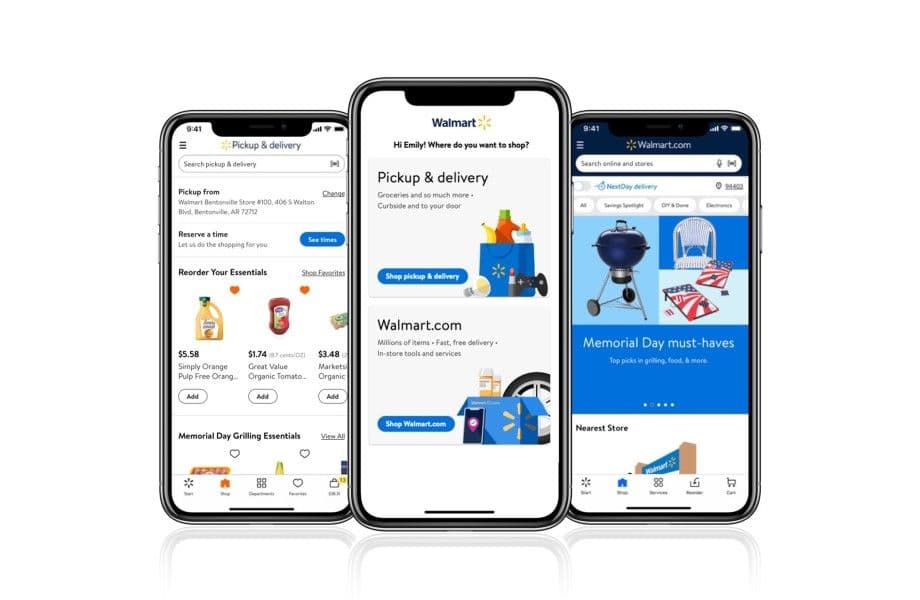How Walmart Leverages Amplitude to Enhance the Omnichannel Customer Experience
Learn how the mobile marketing team at Walmart gained a more holistic view of customers’ digital journeys, flows, and funnels.
Walmart has evolved since our beginnings more than 58 years ago, but our goal remains the same: help people save money and live better. This means making everyday life easier for busy families. As we continue to grow and face new challenges, one focus is to optimize the digital customer experience. We need to be very intentional in how we integrate our ecommerce platform and also serve mobile customers within the brick-and-mortar retail stores with tools and access to Walmart services.
As the Director of Mobile Marketing at Walmart, my team is tasked with overall growth of the flagship Walmart mobile app. We drive app acquisition and retention, but also cover engagement optimization, feature utilization, as well go-to-market (GTM) on new launches.
A Tech Stack That Delivers
When I joined the team in late 2018, our objective was to build on the solid foundation of recent app acquisition to leverage more of the tools at our disposal for understanding mobile customers. Amplitude has been central to building a more holistic view of the customer and gaining better control of our data to understand customers’ mobile journeys, flows, and funnels.
A complete view of the #customerjourney is crucial to both the product and #marketing teams. Click To Tweet
The marketing team built the mobile growth stack to support marketing campaigns with emphasis on components for app attribution, data sharing, and visualization but a complete view of the customer journey is crucial to both product and marketing teams. Walmart was one of Amplitude’s earliest customers and, from the beginning, we used its visualization platform broadly to understand our mobile customers over time.
Amplitude is a powerful addition to our analytics stack because of its high-speed mobile-specific, behavioral aspects. Between the computing power, metrics, and flexibility, it has made our analysis of customer data much easier. The depth and breadth of capabilities helps us pull a deeper behavioral understanding of our customer and what drives value for them in-app.
Merging Apps For A Better Customer Experience
The Walmart mobile app aims to serve and support our omni customers who shop across channels. The tools and features are designed to deliver as much value to the customer who shops in store as they are to the customer researching items before heading to a store, or completing an in-app purchase for same day pick-up or delivery.
Over the years, the Walmart app has continued to build on a powerful set of in-store tools for scanning products, price checking, grocery pick up, checking product availability, and more. Those key features and the extra convenience they deliver for busy families invites app stickiness, but also adds to the complexity in understanding and meeting customer needs. For ‘bricks’ retail marketers, it’s critical to understand customer context in order to appropriately meet their needs.
Prior to last year, Walmart published two apps: a grocery and a general merchandise app. In May 2020, we hit all-time highs in downloads for both apps and, at exactly the same time, we consolidated the mobile apps. We knew it would ultimately lead to a better customer experience. Amplitude was already key in helping us measure the acceleration of app usage during that time, but the platform was also critical during this enormous effort to migrate our two audiences during a time of exponential growth.

Our general merchandise customers have a specific cadence by which they shop the app, whether it’s weekly, monthly, or a handful of times a year. That’s quite different in how people plan weekly shops for groceries. We set up monitoring within Amplitude to provide a view of the customer segments prior, during, and after the app consolidation. Because of this, we were able to monitor cohorts accurately throughout the migration allowing for critical real-time reporting.
The beauty of a visualization tool is that it not only enables fast reporting, but allows for quick comparison analysis to easily see when and which events triggered spikes or segment shifts in user behavior. Recently, the team was stumped by a significant spike in organic app installs. Amplitude allowed us to drill down quickly to a specific date and event to uncover the source; we realized that the spike in app installs was connected to a special item released in store.
We could see and share that important data, increasing insights about cross-channel customer behavior and extracting more learnings at a granular level. With that came some surprising discoveries about future potential impacts on app usage. Our ability to project outcomes greatly enhanced as a result.
Getting Granular: Understanding and Evaluating Customer Engagement and Journeys
In paid media, you’re always evaluating the right place and the message for your customers—and for your dollars. Amplitude helped us evolve our understanding of the key touchpoints for our customers, especially around engagement and re-engagement. Predictions from historical key moments feed into our assumptions for the future and can help determine when growth spikes will happen, how key moment events play into long-term retention assumptions, or not, and how we might plan retention strategy and timing around key events.
When you have the data in front of you and it’s easy to see, it simplifies decision-making. Click To Tweet
Understanding customer context, user cadence, and associated journeys informs a more customized re-engagement approach. Post-install activation and strategic re-engagement requires uncovering the key events and timing of those events in order to build models and plans for longevity, for example, or to plan engagement strategies for those who may be at risk of churn.
We leverage Amplitude’s audience segmentation tools often to help us understand and build plans based on variable customer types, drilling down on key measures of usage, purchasing, and use in-store features. When you have the data in front of you and it’s easy to see, it simplifies decision-making.
Building Confidence with Self-Serve Tools
Just like our customers appreciate an experience tailored to them, our internal teams appreciate that they can access Amplitude insights tailored to their particular needs. In such a large company, silos can form quickly, so you have to find a way to distribute valuable data across the business. Using Amplitude, we all have access to data and can stay closely aligned, no matter which team we’re on or division we report to. It’s a relief to be able to make mission-critical decisions based on this data.
A self-serve analytics solution breaks down data silos and allows large companies to move quickly and make informed decisions. Click To Tweet
Our marketing and product teams are always looking at numbers, and self-service capabilities and UI enhancements make everyone feel confident in their own abilities. You can’t work quickly without a self-service data and analytics tool for marketing, especially in an organization as large as Walmart. It keeps our teams agile, despite our size and the increasing amount of data we collect and analyze.
Just as Walmart aims to make every day easier for busy families, Amplitude makes life easier for busy marketing and product teams. Amplitude’s value is in its ability to allow cross-functional teams to make informed decisions and move quickly in a self-service environment. That’s empowering for all teams.

Sherry Thomas-Zon
Director of Mobile Marketing, Walmart
Sherry Thomas-Zon is the head of mobile marketing at Walmart eCommerce. She previously served as the senior product management lead of mobile apps at Macy's and lectured the executive MBA program at Pepperdine University.
More from Sherry




